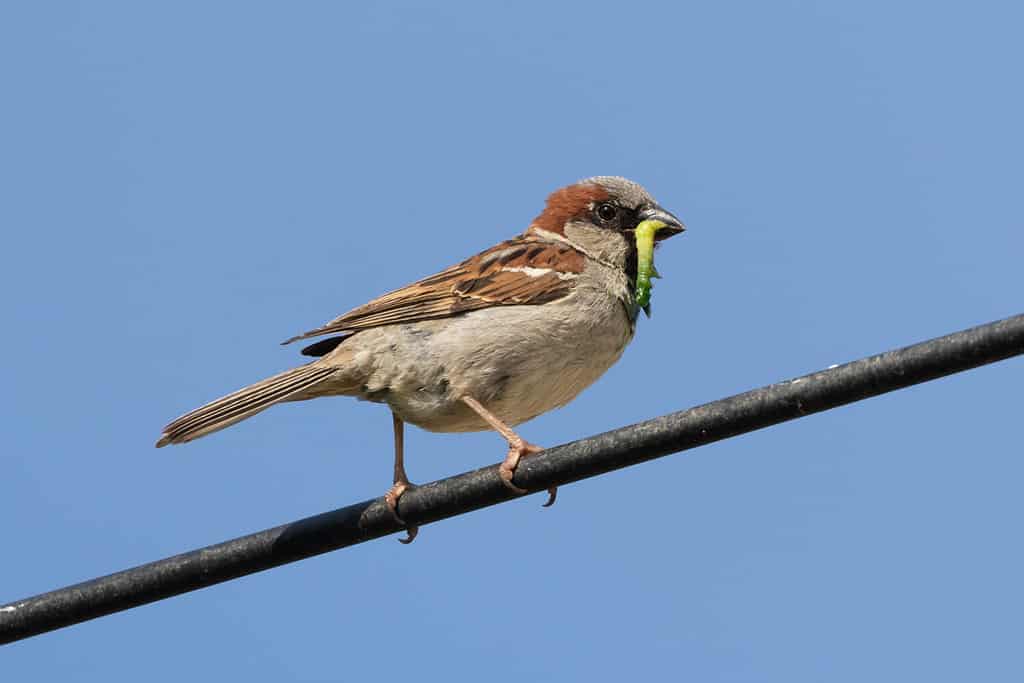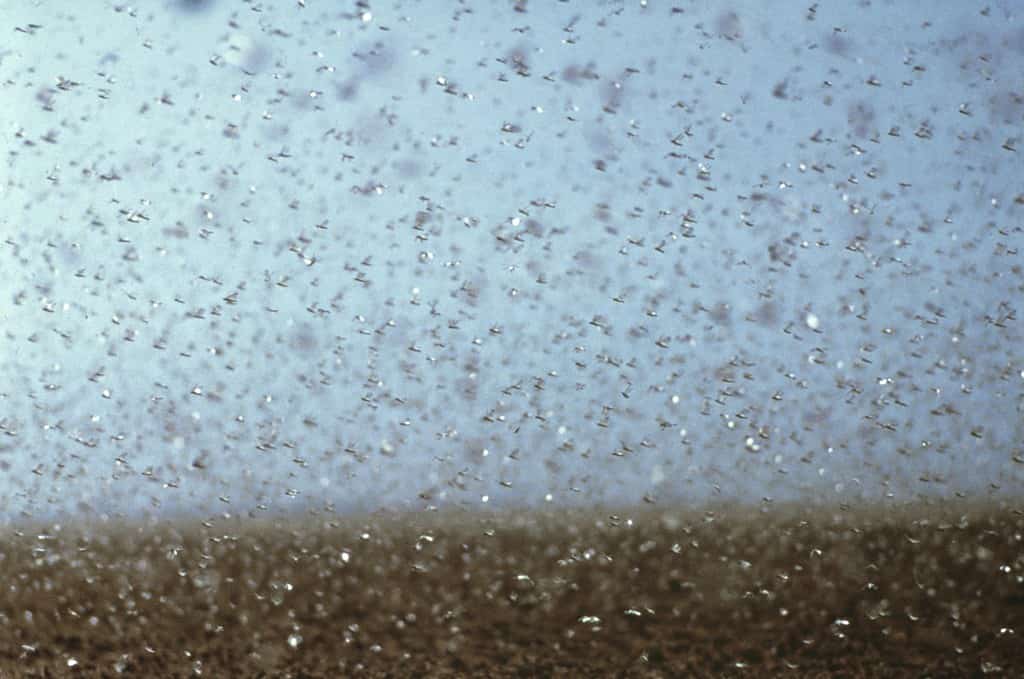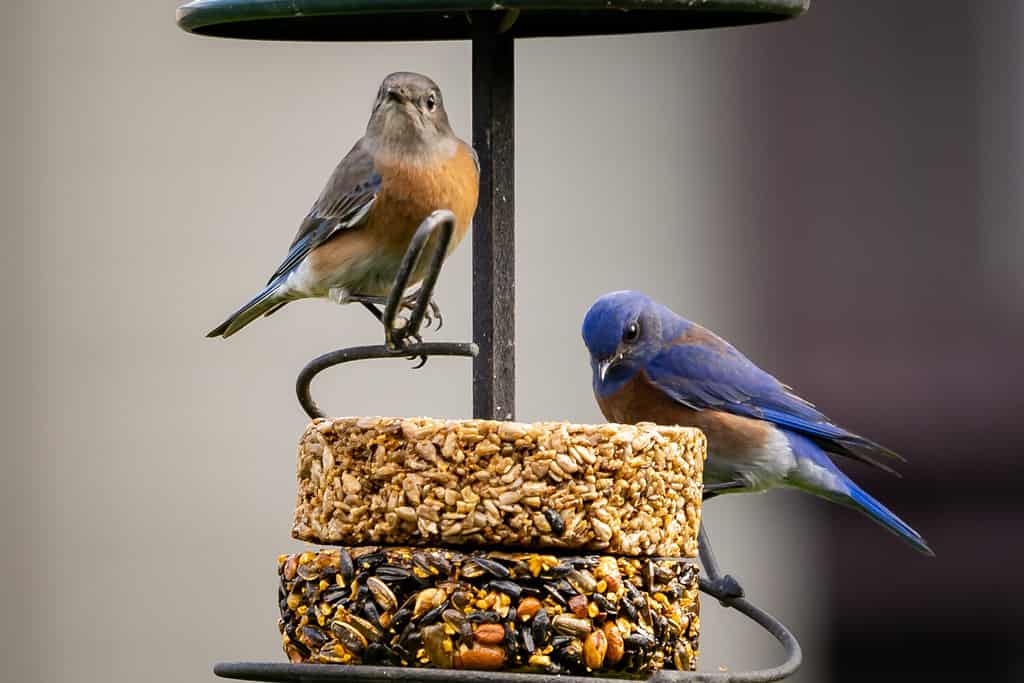From 1958-1962 in China, The Four Pests Campaign was part of a movement called The Great Leap Forward. This movement was put into place by the Chinese Communist Party to help usher the country into more industrialization. During this movement collectivism was enforced and several campaigns were designed to help improve society. However, one part of The Four Pests Campaign backfired due to ecological concerns.
All About the Four Pests Campaign

Sparrows were one of the “pests” targeted by the Four Pests Campaign.
©Werner Baumgarten/Shutterstock.com
The Four Pests Campaign was one of many plans designed to help improve life and food production for the Chinese people during the Great Leap Forward. It focused on the elimination of four “pests”: mosquitos, rats, flies, and sparrows. The campaign sought to help China “conquer” nature and improve industrial output. The main goals of the campaign were to help create a cleaner, more hygienic environment and to help the country increase grain production.
All people aged five and up were called upon to help eradicate these four pests. Colorful posters and catchy slogans encouraged people to kill the four pests in a variety of ways. Poison and cats were used to kill rats. People targeted flies with insecticides. The government improved water drainage to help keep mosquito populations down. Schools would take time out of the day so children could go into surrounding areas and knock down sparrow’s nests. People would make noise around the time that sparrows would go to roost so they couldn’t rest. They would also shoot sparrows to kill them.
Why Are Sparrows Important in Ecosystems?

The Eurasian tree sparrow is one of the sparrow species found in China.
©Wild Carpathians/Shutterstock.com
There are around 180 species of sparrows worldwide. They are divided into “old world” and “new world” sparrows. Old World sparrows are native to Europe, Asia, and Africa. New World sparrows are native to North and South America. Throughout the globe, sparrows are an important chain in many ecosystems. While they do eat grains, they also eat insects, helping to keep populations in balance.
In some cases, sparrows have actually been introduced on purpose to help save plants and crops from bug infestations. In 1850, experts used sparrows to control an infestation of green inchworms that were destroying trees in New York City’s Central Park.
Like dogs, many species have also evolved in unique ways to live alongside humans. Since the Stone Age, they have evolved to be able to eat grains and other starches. Now they enjoy eating our crumbs and living in and around man-made structures.
Sparrows are also important prey for larger birds like hawks, who also eat other vermin that humans don’t want around
How Eradicating Sparrows Led to Famine in China

Locust populations increased without sparrows present.
©CSIRO, CC BY 3.0 – License
The Chinese Communist Party saw sparrows as a threat to the grain stores of the country. And, one of the main goals of the Great Leap Forward was to increase grain storage to feed the people in the more industrialized utopia that the party envisioned. They believed sparrows needed to be eradicated to protect grain. Millions of sparrows were killed in this effort. Sparrows were nearly eradicated in the country.
However, without sparrows to eat them, the locust population swelled out of control. In addition to the burgeoning insect problem, there were also issues from extreme droughts and floods during this period. Many people were diverted to working at industrial rather than agricultural jobs. Plus, the use of pesticides to eradicate the other pests also affected the environment.
Removing one link from the ecosystem changed other aspects enough to create a disastrous famine that led to the deaths of at least 15 million people. The increased locust population ate many of the crops before the reduced agricultural force could harvest them, and harsh weather conditions destroyed many crops.
To restore the environment to some kind of equilibrium to the environment, China imported sparrows from The Soviet Union. They also removed sparrows from the four pests campaign entirely. Instead, they replaced them with bedbugs as the fourth pest.
Experts believe that eradicating the other three pests (rats, flies, and mosquitos) contributed to better health and hygiene for the Chinese people during this time.
How You Can Support Sparrow Populations

Setting up bird feeders can help to support your local sparrow population.
©d murk photographs/Shutterstock.com
To this day, sparrows are part of ecosystems worldwide. When sparrows decline, insect populations grow out of control, and the whole ecosystem can go out of balance leading to insect infestations, crop failures, and other problems. Unfortunately, sparrow populations are dropping rapidly worldwide. However, you can do your part to protect and support sparrows even in your own neighborhood.
- Get a bird feeder. Sparrows will come if you fill it with grains like oats, millet, or seeds like sunflower seeds.
- Put out a bird bath with cool water when temperatures are higher.
- Put up sparrow nest boxes where they can roost safely at night.
- Plant trees. Sparrows do not generally live in the forest away from humans. However, they do love to live in trees near where humans live. Planting trees in your yard gives them more space to rest and nest.
The photo featured at the top of this post is © Wild Carpathians/Shutterstock.com
Thank you for reading! Have some feedback for us? Contact the AZ Animals editorial team.






